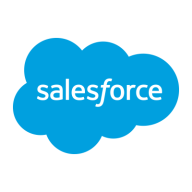

MuleSoft Anypoint Platform and VisualCron are prominent competitors in the integration solutions category. MuleSoft appears to have the upper hand with its robust API management and comprehensive connectivity options.
Features: MuleSoft Anypoint Platform offers extensive API management, iPaaS capabilities, and a wide array of over 200 connectors, making it highly adaptable for various integration needs. Its API management allows seamless connectivity for external API consumers. VisualCron emphasizes user-friendliness with its visual interface, enabling task automation and scheduling without technical expertise.
Room for Improvement: MuleSoft encounters challenges with technical support responsiveness, complex runtime management, and an intricate pricing structure. Users also dislike its initial setup and handling of large data volumes. VisualCron users suggest improvements in the user interface, comprehensive documentation, and a more intuitive learning curve, along with quicker response times from support.
Ease of Deployment and Customer Service: MuleSoft supports public, private, hybrid clouds, and on-premises deployments offering flexibility for large organizations. However, customer service experiences vary with some users satisfied and others less impressed. VisualCron lacks hybrid support but provides versatile cloud and on-premises deployment. It is noted for its client-focused support with responsive dedicated teams.
Pricing and ROI: MuleSoft is viewed as costly for SMBs, with a complex licensing model but offers good ROI for enterprises through reduced infrastructure costs. VisualCron is appreciated for straightforward yearly licensing and cost-effective pricing, which delivers significant ROI with its task automation capabilities.


MuleSoft Anypoint Platform is used for integration and API management, connecting enterprise applications across retail, e-commerce, and supply chain. It supports cloud-to-cloud and cloud-to-on-premises scenarios with real-time and asynchronous messaging.
Users leverage MuleSoft Anypoint Platform for diverse integrations including cloud-based and on-premises, enabling data transformations, middleware functions, and hybrid integrations. It seamlessly connects systems like SAP, Salesforce, and Oracle, facilitating data transfers and integrating legacy systems. The platform offers a graphic interface, quick implementation, and a variety of connectors, contributing to its popularity for robust and scalable solutions. Despite its strengths, users seek better technical support, more connectors, simplified runtime management, and improved documentation.
What are the key features of MuleSoft Anypoint Platform?Enterprises in retail, e-commerce, and supply chain implement MuleSoft Anypoint Platform to connect various applications and systems. It supports real-time messaging for inventory management, synchronizes customer data across platforms, and integrates with legacy systems for smooth data migration. Users benefit from quick deployments and a marketplace that accelerates integration projects.
VisualCron automates tasks like file encryption, scheduling SQL jobs, system integration, data workflow management, and application triggering, making it ideal for handling nightly syncs, FTP server file replacements, job scheduling, and invoice processing.
VisualCron provides an efficient automation solution with features like error and status reporting, API connections, PGP key generation, encryption file creation, and bulk SQL script execution. It simplifies task automation through its mail and event triggers, job variables, conditional execution, and logging with error alerts. Users benefit from its integration capabilities, scheduling flexibility, visual interface, and support for databases and credential management without extensive coding.
What are the most important features?Industries like finance, healthcare, and logistics implement VisualCron to automate data workflows, secure file transfers, and schedule critical tasks. It is used to streamline invoice processing, manage large-scale data operations, and ensure compliance through encryption and error reporting. VisualCron enhances operational efficiency, scalability, and security in various sectors, making it essential for businesses requiring robust automation capabilities.
We monitor all Workload Automation reviews to prevent fraudulent reviews and keep review quality high. We do not post reviews by company employees or direct competitors. We validate each review for authenticity via cross-reference with LinkedIn, and personal follow-up with the reviewer when necessary.